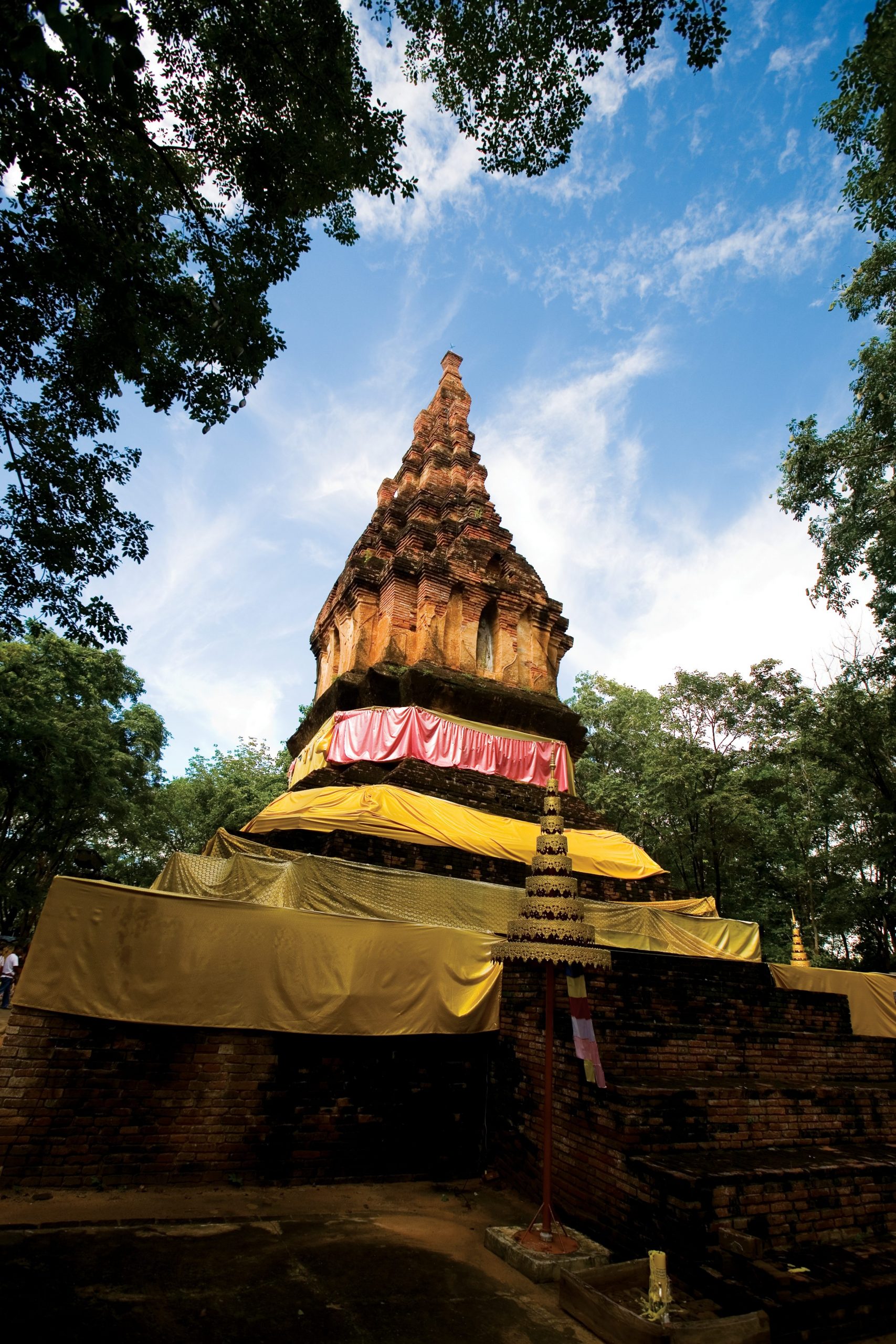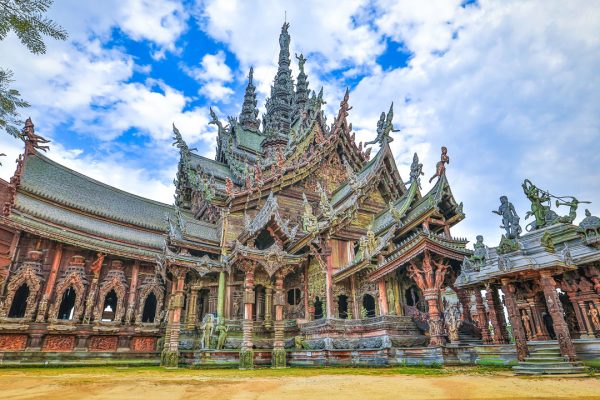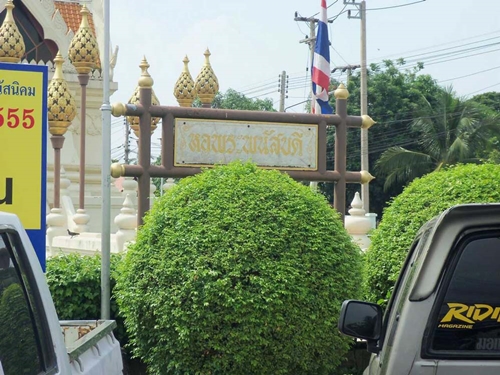
Wat Phra That Nong Sam Muen
Wat Phra That Nong Sam Muenis located in Wat Rat in the village number 1, Ban Kaeng, Amphoe Phu Khiao, Chaiyaphum. It is an important and interesting archeological site in Chaiyaphum. From the city center, go along the highway number 201 past Phu Khiao to Bang Nong Song Hong for approximately 80 kilometres. After that, turn left to the highway number 2055 for 9 kilometres and the tourists will reach Ban Kaeng. At the intersection, turn left to Wat Phra That Nong Sam Muen for around 5 kilometres. Phra That Nong Sam Muen, which is so spectacular and complete, is named after the swamp on the northwest side of the temple. There is still no clear evidence on when it was constructed; however, the architecture and the art work suggest that this Phra That is a combination of Lanna, Lanchang, and Ayutthaya art style. It is predicted to be constructed in the 21st-22nd Buddhist century during the reign of Phra Chaiyachetthathirat of Vientiane, Laos. Phra That Nong Sam Muen is a pagoda with twelve-indented wood corners. It is around 45 metres high and is placed on a square basement with entrance stairs on four sides. Above this basement, there is another basement with the shape of lotuses turned upside down and turned face up, for supporting Phra That.There are arches in four direction, each of which houses the Buddha images in the attitude of contemplating and in the attitude of walking. The Buddha’s relics are contained inside Phra That. Such forms of Phra That can be compared to other Phra That in Vientiane and in Thailand, such as Phra That Wat Thep Phon in Wiang Khuk city of Nong Khai Province and Phra That Si Mueang in Vientiane, etc. According to the archeological evidence, this area was a large ancient city in Dvaravati period, approximately in the 12th- 16th Buddhist century. There are traces of many ditches, ridges, mounds, archeological sites, and antiques found inside and outside the moat. Many of them are kept in the temple,such as Bai Sema (boundary of a bot) made of sandstone. Some pieces of them are inscribed in Vatteluttu alphabet in Sanskrit language during the 12th- 14th Buddhist century and one of them is placedas a city pillar of Amphoe Phu Khiao. Besides, there are 2 idol sculptures, one of which is ruined, with the head similar to the Buddha image seated under naga in Bayon Khmer style during the 18th Buddhist century. Ram Phi Fa is a group ceremonial dance at Phu Phra. There is Phrachao Ong Tue, a Buddha image carved out of sandstone. It is approximately 2 metres tall. The villagers believe that it is very sacred. The dance takes place on the 13th- 15th day during the waxing moon of the 5th lunar month-April-and during the Buddhist Lent. There are a number of people participated in the ceremony.



